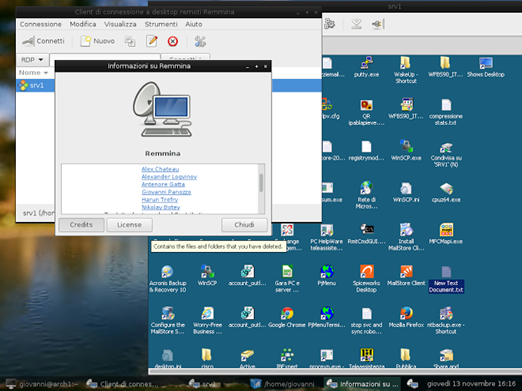
- Best linux system monitor remote prettiest how to#
- Best linux system monitor remote prettiest install#
- Best linux system monitor remote prettiest drivers#
- Best linux system monitor remote prettiest driver#
- Best linux system monitor remote prettiest windows 10#
Best linux system monitor remote prettiest how to#
Best linux system monitor remote prettiest driver#
AMD Radeon Ubuntu 20.04 Driver Installation.
Best linux system monitor remote prettiest install#
Best linux system monitor remote prettiest windows 10#
Ubuntu 20.04 Remote Desktop Access from Windows 10.How to find my IP address on Ubuntu 20.04 Focal Fossa Linux.
Best linux system monitor remote prettiest drivers#
How to install the NVIDIA drivers on Ubuntu 20.04 Focal Fossa Linux.That’s where the top command excels, displaying the memory utilization for every process on the system. If you’d like to go straight to the source, take a peek at the /proc/meminfo pseudo-file:Īlthough the free command does a great job of showing us the overall RAM utilization on a system, it doesn’t tell us which tasks are consuming the memory. It’s worth mentioning that the free command is really just a concise way to see information that’s already displayed somewhere else. For example, to make free human readable and output memory usage every 5 seconds, 20 times: But feel free to combine both switches to get the exact behavior you want. With no -s option, the count option issues new output every second. For example, this command would run free 3 times, before exiting the program: If you only want free to run a certain number of times, you can use the -c (count option). To stop free from running, just press Ctrl+C. For example, to run the free command every 3 seconds:

The -s (seconds) switch allows free to run continuously, issuing new output every specified number of seconds. This is handy if you want to see how memory is impacted while performing certain tasks on your system, such as opening a resource intensive program. But free also has some options for running continuously, in case you need to keep an eye on the usage for a while.

When running the free command, it shows the current RAM utilization at that moment in time. This is the column you should look to if you simply want to answer “how much free RAM does my system have available?” Likewise, to figure out how much RAM is currently in use (not considering buffer and cache), subtract the available amount from the total amount. The number in this column is a sum of the free column and cached RAM that is available for reallocation. Total used free shared buffers cache availableĪvailable: This column contains an estimation (an accurate one, but nonetheless an estimation) of memory that is available for use. You can see these two columns separately by specifying the -w (wide) option: Most of the memory represented here can be reclaimed by processes whenever needed. Linux utilizes the buffer and cache to make read and write operations faster – it’s much quicker to read data from memory than from a hard disk. In Linux, tmpfs is represented as a mounted file system, though none of these files are actually written to disk – they are stored in RAM, hence the need for this column.įor the curious, a system’s tmpfs storage spaces can be observed with the df command:įilesystem Size Used Avail Use% Mounted onīuffer/Cache: This column contains the sum of the buffer and cache. As the name implies, this file system stores temporary files to speed up operations on your computer. Shared: This column displays the amount of memory dedicated to tmpfs, “temporary file storage”. As you can see in our example output above, our test machine has a measly 145 MB of memory that is totally free. There should ordinarily be a pretty small number here, since Linux uses most of the free RAM for buffers and caches, rather than letting it sit completely idle. The number in this column is the sum of total-free-buffers-cache.įree: This column lists the amount of memory that is completely unutilized. This makes read and write operations more efficient, but the kernel will reallocate that memory if a process needs it. While the “used” column does represent RAM which is currently in use by the various programs on a system, it also adds in the RAM which the kernel is using for buffering and caching. Just because memory is “in use” doesn’t necessarily mean that any process or application is actively utilizing it.

Used: This column lists the amount of memory that is currently in use – but wait, that’s not quite as intuitive as it sounds. Total: This column is obvious – it shows how much RAM is physically installed in your system, as well as the size of the swap file. Let’s break down the details represented in all of these columns, since the terminology here gets a little confusing. This output tells us that our system has about 2 GB of physical memory, and about 1 GB of swap memory. Now the values are much clearer, even with a brief glance. The -h switch, which stands for “human readable”, helps us make more sense of the output: That’s chiefly because the output is given in kibibytes by default.

Total used free shared buff/cache available


 0 kommentar(er)
0 kommentar(er)
